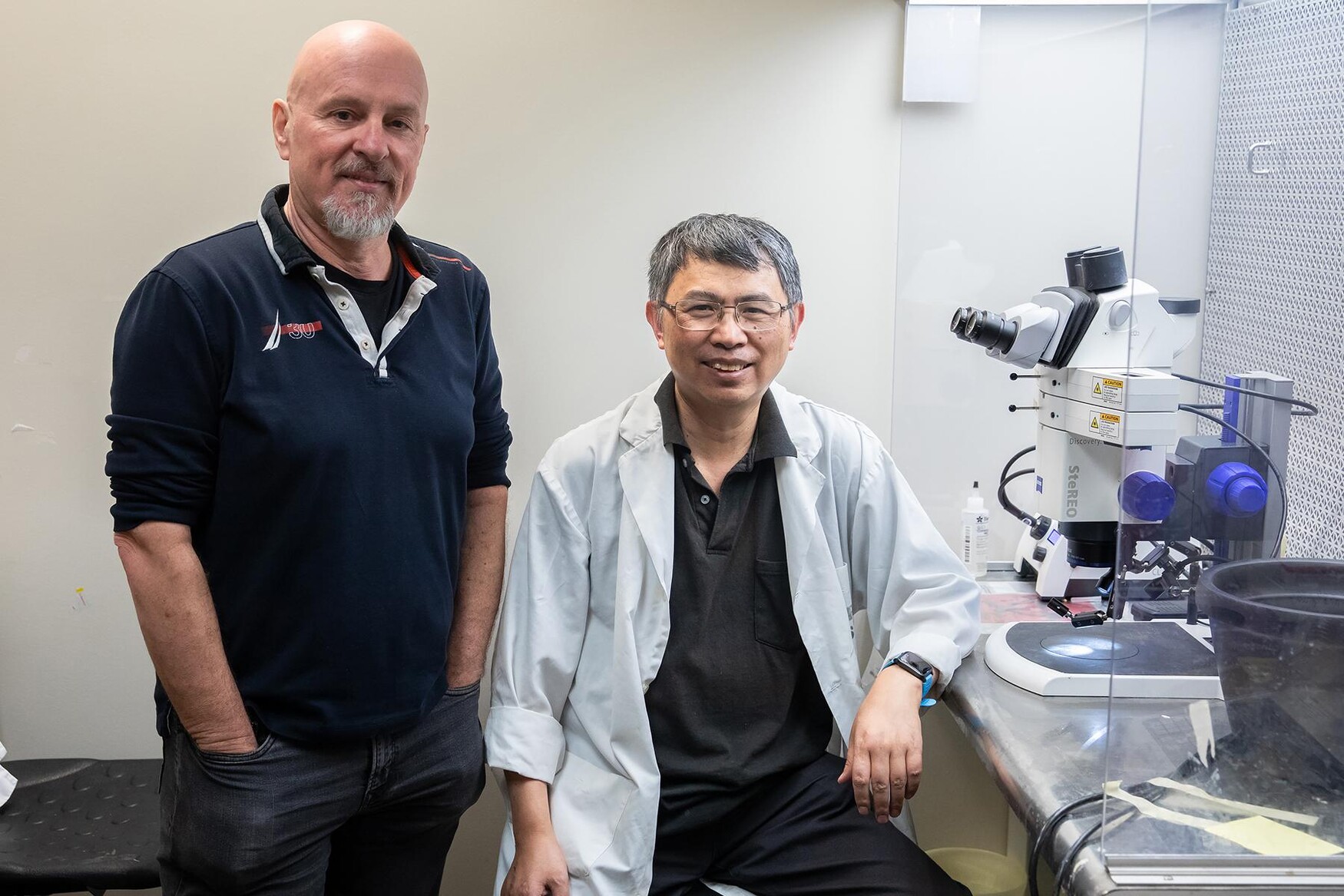Mobile Menu
- Education
- Research
-
Students
- High School Outreach
- Undergraduate & Beyond: Community of Support
- Current Students
- Faculty & Staff
- Alumni
- News & Events
- Giving
- About

A mutation’s ability to cause cancer depends on how fast it forces cells to divide, Toronto researchers have found.
The study, led by Rod Bremner, a senior investigator at Sinai Health’s Lunenfeld-Tanenbaum Research Institute and professor of opthalmology & vision sciences and laboratory medicine & pathobiology at the University of Toronto’s Temerty Faculty of Medicine, has identified cell cycle length — the time it takes one cell to divide into two daughter cells — as a critical factor in determining whether a mutation drives cancer or is harmless.
The findings, published in Nature, have implications for developing new treatments that enhance the body's natural defences against cancer.
Cancer starts when cells acquire genetic mutations that prompt them to proliferate out of control, forming tumours. Not all cells that carry such mutations will turn into cancer, however. This is because the body has evolved ways to prevent cancer from forming by neutralizing or destroying the suspect cancerous cells. The protective mechanisms include apoptosis, or programmed cell death and clearance by the immune system, among others.
“An average adult has millions and millions of cells which have mutations in them, yet thankfully, we don’t develop cancer all the time,” said Bremner, who is also a member of the Institute of Medical Science at Temerty Medicine.
Now, Bremner and team have identified the speed at which mutated cells divide as another mechanism of cancer resistance.
Spearheaded by scientific associate Danian Chen, the study shows that mutated cells that divide rapidly and have shorter cell cycles are more prone to turning cancerous. In comparison, those with longer cycles exhibit resistance. The finding was consistent across various tissues and types of cancer, including retinoblastoma, pituitary cancer, and lung cancer.
The researchers also found that most mutation-carrying cells eventually exit the cell cycle and stop dividing.
Bremner explains, “The most common way that mutated cells escape cancer is just by becoming normal cells. They divide abnormally a little bit and then they stop and look like any other normal cell.”
To explore the relationship between cell cycle length and cancer, the team examined the effect of suppressing cancer by introducing known tumor-suppressing mutations in several preclinical models. They began by targeting retinoblastoma, a cancer of the retina, and observed that every manipulation that blocked cancer increased cell cycle length. Most importantly, they then discovered that the mutated cell type from which retinoblastoma originates divides faster than mutated cell types that never form cancer.
Other experiments showed that slowing down the rate of cell division suppressed cancer independently of other known resistance mechanisms, such as apoptosis and immune clearance, indicating that cell cycle length is a distinct mechanism of cancer resistance.
The team also demonstrated that in other tissues, such as the lung and pituitary gland, cancer consistently develops in the mutated cell type that divides the fastest, while those with slower division rates are protected from cancer. Furthermore, the researchers showed that the cell cycle length consistently predicts the cancer cell of origin, regardless of when the tumor-suppressing mutation was introduced.
Combined, the findings suggest that interventions targeting cell cycle length could be a strategy for cancer prevention. By targeting the cell cycle length, it may be possible to develop therapies that prevent the initiation of cancer in high-risk individuals.
“Our work suggests that we might be able to intervene in cancer-prone cells to slow them down a little bit with the right therapeutic agents. But first, we need to understand the mechanisms governing cell cycle rate in different cell types. There's definitely a lot to be learned from the trillions of cells that are resistant to cancer, and we have only just got started,” said Bremner.
This research was supported by grants from the Canadian Institutes of Health Research, the Krembil Foundation, and the Rankine Family fellowship.

